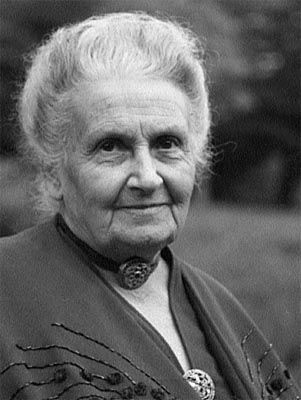About Maria Montessori
Dr. Maria Montessori is the founder of Montessori. Her long life was dedicated to improving the education of children, starting from the early observation that every child spontaneously wants to learn. By the time she passed away, her method was being taught successfully throughout the world.
Maria Montessori drew her ideas about how to handle and educate children from her observations of them at different stages in their development, and from their exposure to children of different cultures. There are six core beliefs that sum up the Montessori method: (1) All children have “absorbent ” minds; (2) all children pass through “sensitive” periods; (3) all children want to learn; (4) all children learn through play / work; (5) all children pass through stages of development; and (6) all children want to be independent.
Children learn differently than adults. They have what Dr. Montessori called the “absorbent mind”: one that unconsciously soaks up all information from the environment. This lasts for at least the first three to six years of a child’s life. The second phase is from 3 to 6 years of age, where the child’s mind is still absorbent, but now consciousness begins. The process of learning is active rather than passive. This is the perfect time when children should be in a Montessori environment.
The Montessori method is not just a curriculum, it is a way of life. The Montessori environment supports a child’s natural tendencies to discover his or her own personality, talents and needs, as well as respecting each child’s choices and interests. Since children learn through their hands, all of the works in the classroom are beautifully made. The environment supports freedom of movement. The children learn to take care of themselves as well as the environment.
The prepared environment addresses the academic and social needs of the children. The practical life area focuses on strengthening a child’s concentration, order, independence, and fine motor control. The sensorial area supports the senses. Children at this age love to learn about quantity, addition, subtraction, and geometry. Language is a huge part of the Montessori environment. Reading and writing should be taught at an early age. Geography is also something children love to learn about. The continents are a great way to teach them about different cultures. Art and Music are also very important for children this age.
We hope you have learned a little bit more about the teachings of Montessori. After being in a Montessori environment, your child will be confident and ready to move on to primary education.

